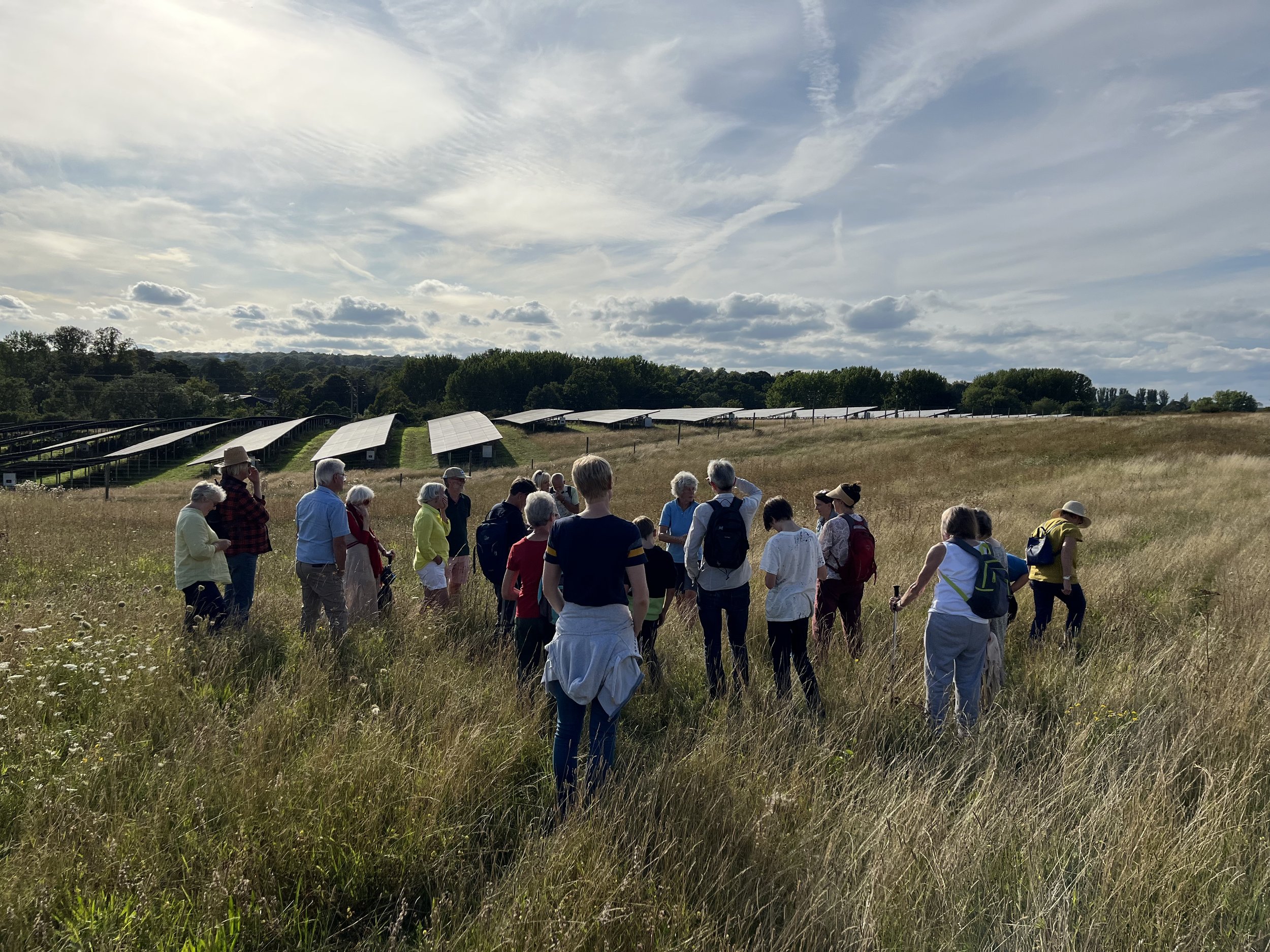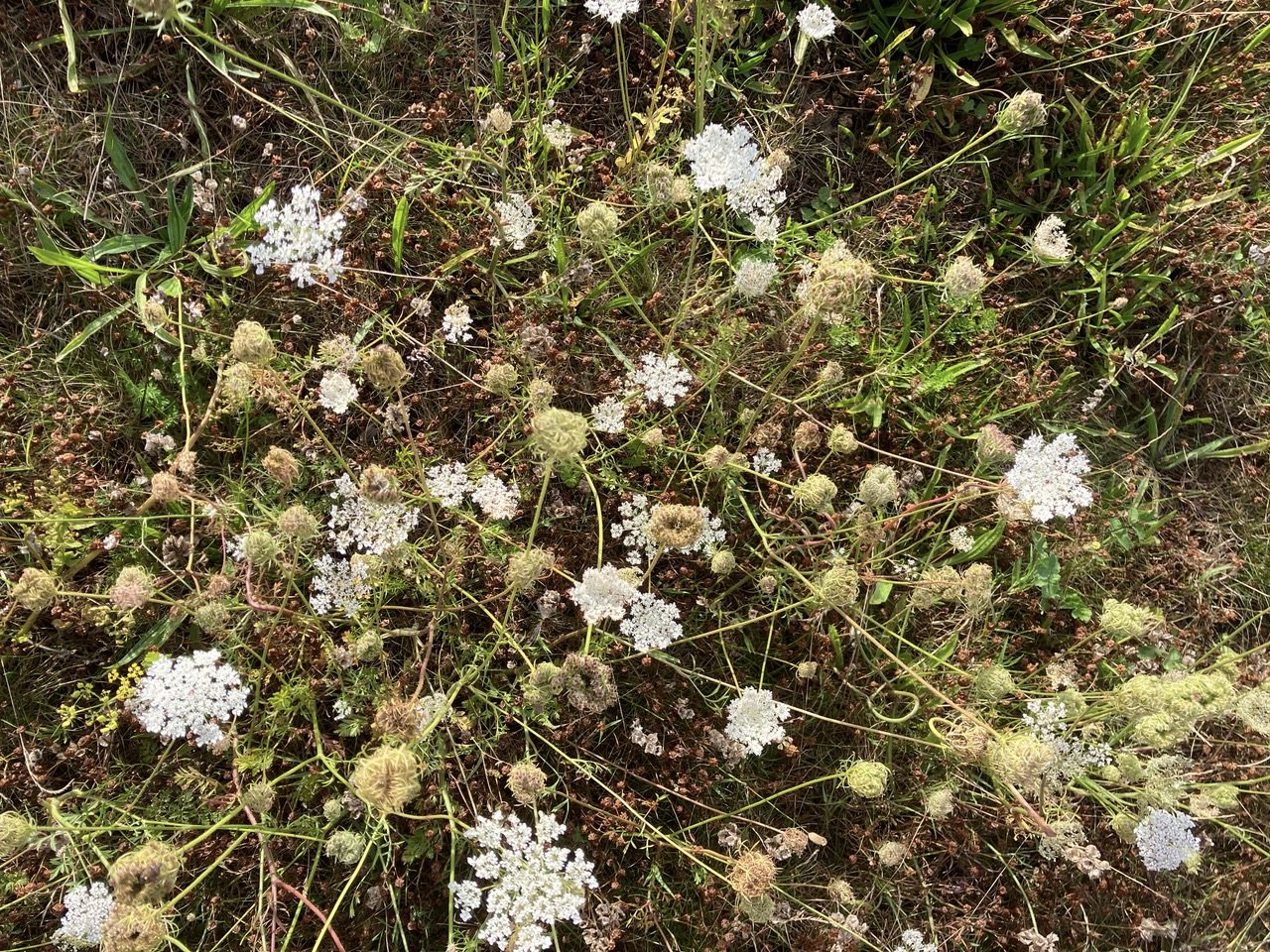Nature restoration at Southill Solar
By Mark Gregory
Southill Solar farm is an agreeable place to be on a balmy end of summer evening. In late August, the unpanelled part of the site presents as a sea of tussocky limestone grasses, wild-flowers and herbs. The scent of wild marjoram and basil hangs in the air. It looks and smells nice but is it biodiverse?
A group of about 20 investors in Southill Community Energy, the cooperative that owns the solar farm, recently had the chance to find out on a tour led by Anne Miller, a local volunteer and member investor.
The 18-hectare site is situated a mile from Charlbury on the road to Witney. 40 percent of the area is occupied by solar panels. The rest is run as a nature restoration project which has been going for seven years. The aim is to increase animal and plant biodiversity and restore soil health on a former slab of arable land that had been stuffed with pesticides and chemical fertilisers.
As it looks now – English meadow with a touch of Savannah - the site would win friends among both rewilders and romantics looking for beauty in the countryside. On our visit we saw swathes of yarrow, wild carrot and parsnip with yellow vetch, bird’s foot trefoil, knapweed and clovers peppered through the grasses. Earlier this summer we were delighted to see pink pyramidal orchids amongst ox-eye daisies and yellow rattle. But getting to this state has not been easy.
As Anne explains, there was no template to follow. There was plenty of expertise to tap into on efficient farming practices but not much on managing land to promote biodiversity. In the early days, she says, there were problems with ‘the wrong sort of grass’. The first attempt at reseeding resulted in a site that looked like a golf course, with an invasion of unpleasant, non-nutritious sterile brome. The solution came from mowing-out the brome and the discovery that a small part of the site had never been ‘improved’ for agriculture or ploughed. Seeds were taken from this meadow-like space and replanted over a much larger area, with considerable success.
Wildlife surveys, carried out on a regular basis, have pointed to significant increases in the numbers of insects, small mammals, and birds, although some butterfly populations suffered a temporary dip in the super-hot, dry summer of 2022.
Anne’s view is that most things are going in the right direction, although there continue to be issues with invasive weeds. Ragwort has been a problem in the past. This year’s challenge is old man’s beard or wild clematis which spreads everywhere given half a chance. Volunteer work parties will be busy this winter, engaged in removal.
Grazing at appropriate times of year could also help tackle the weeds. There are plans to have sheep onsite, probably starting in October, using mobile barriers to keep them in the right places. In addition, an area of clay-rich soil, especially vulnerable to weeds, has been permanently fenced off to provide the option of bringing in cattle or horses and possibly sheep to graze in future. Meanwhile, there’s discussion of putting sheep in the solar generating part of the site to control vegetation under the panels, but it is still not clear if any shepherd will find that economically viable.
One absolute delight this year has been the discovery of large numbers of glow-worms – actually, a type of beetle. The females glow in the dark on summer evenings to attract males flying overhead. They’ve probably always been there but until recently no-one had thought to go out at night to check.
The nature restoration project relies on volunteers joining regular work parties. If you would like to be involved, please contact Anne at annemiller1@gmail.com.







